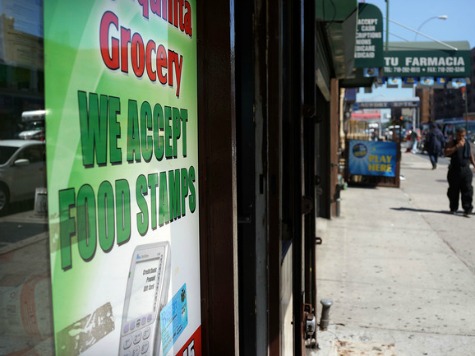WASHINGTON, Nov. 1 (UPI) — U.S. food stamp cuts taking effect Friday are one of two stimulus safety-net programs ending, an economist said. The other is extended unemployment benefits.
The so-called food stamp cliff, affecting nearly 48 million people, or 1 in 7 Americans, “may be more of a sidewalk curb,” JPMorgan Chase & Co. Chief U.S. Economist Michael Feroli told The New York Times in an email.
“The bigger cliff, which I’m surprised people aren’t talking about, is emergency unemployment benefits Jan. 1,” he said.
The Emergency Unemployment Compensation program, financed by the federal government for states that met certain unemployment and state benefit thresholds, was part of the American Recovery and Reinvestment Act of 2009 — commonly referred to as the Recovery Act, or the stimulus.
It was a temporary increase in the maximum amount of food stamp benefits people could get monthly as part of Washington’s response to the Great Recession.
The EUC program extended unemployment benefits to jobless workers beyond the normal maximum of 26 weeks up to 99 weeks at first and later to 73 weeks.
The maximum returns to 26 weeks Jan. 1.
Friday’s change in the food stamp program, officially known as the Supplemental Nutrition Assistance Program, or SNAP, cuts monthly benefits 13.6 percent — or, more precisely, ends a 13.6 percent increase in SNAP benefits from the stimulus act.
Benefits to a family of four receiving the maximum amount drop Friday to $632 from $668, the U.S. Agriculture Department says.
The maximum benefits for a single adult fall to $189 from $200.
The cuts leave recipients with an estimated average $1.40 to spend on each meal, the department says, citing its Thrifty Food Plan.
The number of people on food stamps jumped to nearly 48 million in July from about 26 million in 2007, before the recession started, the government said.
The increase is due to a rise in the number of people who lost their jobs and needed food assistance, government efforts to increase food stamp usage by families that didn’t know they were eligible, and relaxed eligibility standards in some states, the Center on Budget and Policy Priorities says.
The food stamp cuts — which are projected to reduce federal spending $5 billion in the current fiscal year and $6 billion the next two years — are separate from additional cuts House and Senate negotiators are considering as they work out a farm bill. Food stamps are part of the farm bill.
The Republican-controlled House version of the farm bill proposes cutting $39 billion from food stamps over 10 years. The Democratic-controlled Senate proposes cutting $4 billion over the same period.
Food stamps are expected to cost taxpayers $76.4 billion this fiscal year.

COMMENTS
Please let us know if you're having issues with commenting.